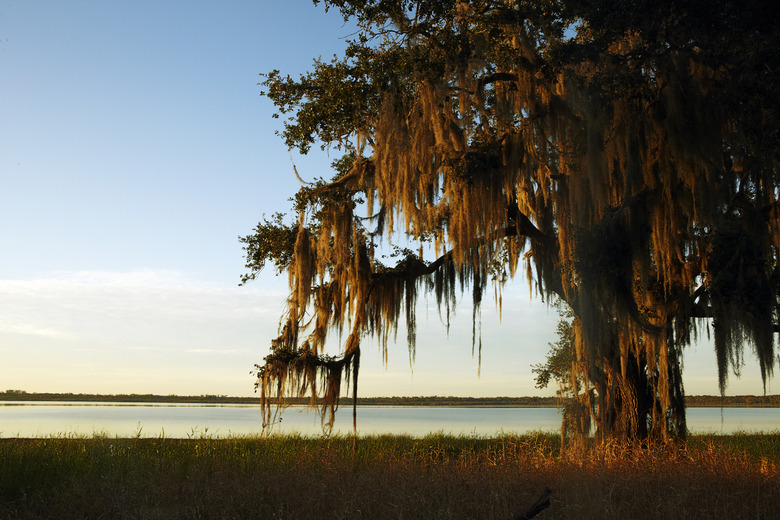Is Spanish Moss Poisonous?
Spanish moss is a nonpoisonous plant of the southern United States that grows on trees and is what botanists call an epiphytic plant. It depends on another plant for support but does not absorb nutrients from the host.
Function
Function
The stem of Spanish moss, which is not a moss at all but a flowering plant, wraps around a host tree, allowing the plant to hang from the branches.
Considerations
Considerations
The leaves of Spanish moss have a unique design that lets them trap water as well as nutrients from the sir, sustaining the plant. The green parts of Spanish moss create sugars via photosynthesis, a process in which light helps create sugar that the plant uses as energy.
Geography
Geography
Spanish moss grows predominantly in Mississippi, Georgia, Florida, Louisiana, North and South Carolina, and Alabama. Among its most common habitats are swampy areas and along rivers and streams.
Effects
Effects
Spanish moss can adversely affect a tree when it becomes so thick it weighs enough to break branches or block out the sun, thus preventing that part of the tree from thriving.
Benefits
Benefits
One of the more common uses of Spanish moss has been as stuffing for furniture, automobile seats and mattresses. Spanish moss today winds up in many flower arrangements and is useful for such purposes as insulation or as packing material.
Cite This Article
MLA
Lindell, John. "Is Spanish Moss Poisonous?" sciencing.com, https://www.sciencing.com/spanish-moss-poisonous-5717155/. 22 November 2019.
APA
Lindell, John. (2019, November 22). Is Spanish Moss Poisonous?. sciencing.com. Retrieved from https://www.sciencing.com/spanish-moss-poisonous-5717155/
Chicago
Lindell, John. Is Spanish Moss Poisonous? last modified March 24, 2022. https://www.sciencing.com/spanish-moss-poisonous-5717155/
